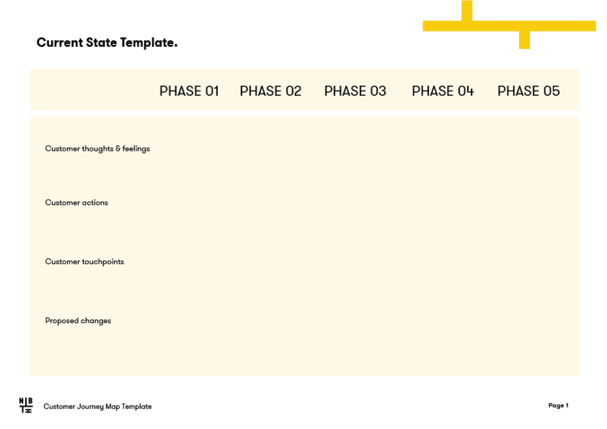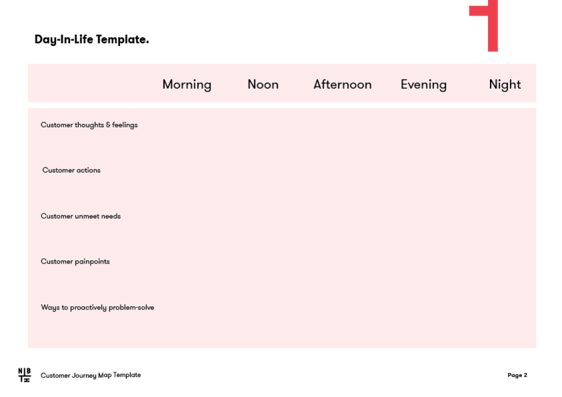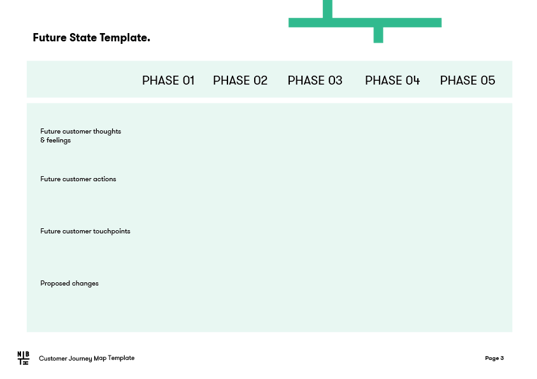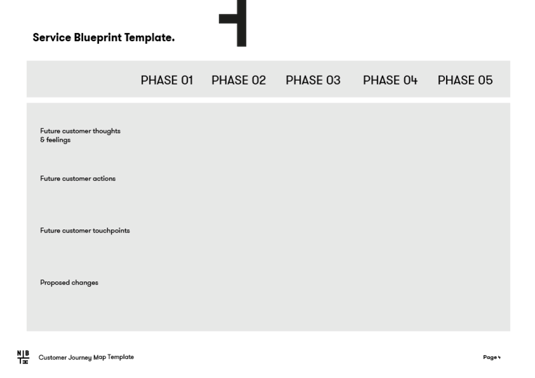Mapping out the customer journey is something we know we should do, but admittedly often forget. But, when you see people losing interest in your product/service, customers dissatisfied, or customers just not that into you, it’s time to double down on your customer journey map. It doesn’t matter if your product is the best on the market, if customers get derailed because the mapping has issues, you won’t get customers. After all, your customer journey is exactly how they invest in your company. It’s a story, and your customer is the main character. Who wants to be part of a boring story?
Moreover, with the increasing number of resources at consumers’ fingertips, people are becoming smarter and taking longer to purchase. Combine this with rapidly growing social media, and you'll find that both the average sales cycle and customer churn rate of many businesses growing. Unfortunately, much to your (and our) dismay, you can’t just assume or predict customer behaviour based on your educated opinion. A customer journey is based on specific experiences which is why the best way to understand customers is simply to ask them.
So, using the info featured in this article, you should find everything you need to know about developing a customer journey map from scratch, including what it is, and the steps you need to take to get your customers back on track.
What is customer journey mapping?
Essentially, a customer journey map is a visual representation of the process a customer or prospect follows to achieve a goal with your company. Best visualised using a diagram for referral, the design and segments are based on the 3-stage buyer journey; awareness, consideration and decision. The best way to start the development process is to understand exactly how they’re interacting with your business. Using excel sheets outlining key events, motivations and areas of friction you can improve everything in your power to-do with your user’s experience.
An effective journey map pinpoints the current process, from the first to final touchpoint to find whether your customers are reaching the goals and, if not, how they can. Rather than a straight line from A to B, interaction between buyers and businesses often move back and forth, making them cyclical, multi-channel journeys – something difficult to visualise. Because of this, there are a few methods used to represent this journey. No matter which ever method you choose, the most important thing is that it makes sense to whoever is using it.
At this point, I’m sure a lot of you reading this are probably thinking that you already know the needs and pain points of your customers, so thanks but no thanks. However, 9 times out of 10, this is only true at surface-level. If you aren’t aligning each step you want your customers to take with a certain goal, you aren’t keeping customers satisfied in each phase which increases the chance for unhappy customers. After all, everything you do must revolve around solving customer problems and helping them achieve long-term success with your product or service. So with this in mind, let’s look into what you can do to create effective maps.
1. Establish your objectives
Before you start laying out the ground-work for your map, you need to ask yourself why you’re actually making one in the first place. What are you aiming to achieve? Who is it for? What experience is it based upon?
Based on this, you may want to create a buyer persona. This is a fictitious customer with all of their demographics and psychographics who represents your average customer. Having a clear persona is helpful in reminding you to direct every aspect of your customer journey map towards them. For more information on this, check out our blogs on buyer personas and how to develop them here
2. Develop your personas and highlight the targets.
Once you’ve built the base for the personas it’s time to do some investigating to make each profile more real. Meaning, it’s time to do some research. Some amazing ways to conduct research involve questionnaires and user testing. Both options can provide super valuable customer feedback which is what we want. The aim is to reach out to current and loyal customers, we don’t want to be reaching out to those who are a 'maybe'. This is because you want feedback from people who are actually interested in purchasing your product, aka the perfect customer scenario. Just like when you’re looking to make the perfect brownie, you don’t follow a recipe that gives mediocre results. You want to follow advice that gives you the exact results you want whether that be purchasing products from your business or baking the best fudge brownie possible. To ensure you’re getting top-notch guidance here are a few questions you should ask:
- How did you hear about our company?
- What first attracted you to our website?
- What are the goals you want to achieve with our company? In other words, what problems are you trying to solve?
- How long have you / do you typically spend on our website?
- Have you ever made a purchase with us? If so, what was your deciding factor?
- Have you ever interacted with our website with the intent of making a purchase but decided not to? If so, what led you to this decision?
- On a scale of 1 to 10, how easy is it for you to navigate our website?
- Did you ever require customer support? If so, how helpful was it, on a scale of 1 to 10?
- Is there any way that we can further support you to make your process easier?
During this process, you want to identify only a few key personas as the customer journey map aims to track specific paths, too many may mean you won’t accurately capture their experience. Depending on whether this is the second or tenth time you’ve been through this process, start with the most common routes your target persona takes. Don’t stress about all the ones you leave out, as they can always be included further down the track.
3. Touchpoints.
It's finally time to figure out the touch points. Basically, touch points are the places where your customers interact with your business. These may include your website, socials, paid ads, emails or third-party review sites or mentions. During this step in the process you should start listing the touch points your customers and prospects are currently using, and those you believe they should if they aren’t already included. The number of touch points needed can provide valuable information. If they are using fewer touch points than expected, does this mean they are getting turned away and leaving quickly? If they’re using more than expected, does this imply the website is complicated and requires too many steps to get to the goal? Whatever is going on, understanding the touch points is a step toward better understanding the ease and objectives of customer journeys.
The next move is to list out the actions your customers perform during these interactions per touch point. This may include a Google search for your keywords or clicking on an email from you. You may wind up with a long list of actions. That's fine. You'll get a chance to rationalise your information later. All in all, just take the time to recognise when customers are being expected to take too many actions to achieve their goals. Reducing the number of steps a customer needs to take can feel risky, but pays off in the end.
Marketing is a result of cause and effect, plain and simple. Likewise, a customer’s action is motivated by an emotion, emotions that will change depending on which part of the journey they’re at. A huge influence on their emotion can be any pain points or problems. Therefore, making sure you’re providing the right content at the right time, meaning a smoother customer emotional journey through your brand. Get to know what exactly these roadblocks are, what’s stopping your customers from making their desired action. There are heaps of ways to address these such as changing the obstacle or providing information to reduce the tension.
4. The types of customer maps
When creating your map, there are 4 basic types that each provide their own benefit. So, take note of the pros and cons of the following options and pick which one is most accurate depending on the purpose of your map.
Current State
These maps are the most common and visualise the actions, thoughts, and emotions your customers currently experience while interacting with your company. If you're wanting to improve the customer journey, this is the best format for you. The idea is that it reflects the search, awareness, consideration of options, purchasing decision, and post-purchase support processes. To help you out a little we've included a template example that you can use or feel free to change if something isn't quite relevant to your situation.

Day in the life
These customer journey maps depict the actions, thoughts, and emotions your customers currently experience on a daily basis. These include interactions with and without your products/service. This method aims to give a bigger picture into the lives of your customers and what their pain points are day to day - best used for addressing unmet customer needs before customers even know they exist. Since this template reflects all the thoughts, feelings, actions, needs, and pain points a customer has in their entire daily routine - whether or not that includes your company - you'll want to map out this template in a chronological structure. This way, you can highlight the times of day at which you can offer the best support.

Future State
This map structure examines the same things; the actions, thoughts, and emotions your customers experience as the other two, but in a future perspective. Based on what the current experience is, you map out where you want to be with this style. They are best used for illustrating your vision and setting a clear objective. Similarly to the current state template, these phases may also reflect the future predicted or desired search, awareness, consideration of options, purchasing decision, and post-purchase support processes. Since this takes place in the future, you can tailor these phases based on what you'd like the customer journey to look like, rather than what it currently looks like.

Service Blueprint
The final map works with a simplified version of one of the above map styles, then layers on the factors responsible for delivering that experience, including people, policies, technologies, and processes. Best used for identifying the root causes of current customer journeys or identifying the steps needed to attain desired future outcomes.
Since this template is more in-depth, it doesn't follow the customer journey too closely. Instead it relies on the physical evidences; people, places, or objects at a time. Generally these should be factors that can create impressions about the quality and prices of the service, or even simpler, anything the customer comes in contact with in your control.

5. Pick the relevant resources
Your customer journey map intersects almost every part of your business. As this process will show the relevant resource involved in creating your desired customer experience, you must take into account what you've got and what you need to acquire. If flaws are discovered in the customer experience, follow up on the tools required to amend these issues. Chances are, your team may need to invest in new and improved tools to manage better.
And, through applying these new tools in your map, you can accurately predict how they'll impact your business and drive outsized value. Hence, making it way easier to convince gatekeepers and decision-makers to invest in your proposals.
6. Walk a mile in their shoes
Just because you've designed your map doesn't mean the work is done. This is the most important part of the process: analysing the results. How many people are clicking to your website but then closing out before making a purchase? How can you better support customers? These are some of the questions you should be able to answer with your finished map. Analysing the results can show you where customer needs are being unmet. By approaching this, you can ensure that you are providing a valuable experience and making it clear that people can find solutions to their problems with your company's help.
Using this process as well as some analysis of the data should provide you with enough information to make the right changes to reach your goal. No matter how big or small these changes are, they are calculated to provide clarity around whether these decisions have been done with purpose. Changes are to be made to improve customer experience so certainty of them working is super important. With the help of the visualised customer journey maps, you can ensure those interacting with your brand are met with only positive experiences.
So is it done?
Luckily for you, your map is a constant work-in-progress. reviewing it here and there will help identify gaps and opportunities and provide chances for you to identify any roadblocks that may arise. As usual, don't simply use your intuition but your data and research to check. On the same note, throughout this whole process, stay in close communication with any stakeholders involved as new products or offerings can equally shift gaps and opportunities.
All in all, customer journey mapping gives you some perspective on your customers so you can make sure your product is doing what is should be, making people's lives easier and more enjoyable!


